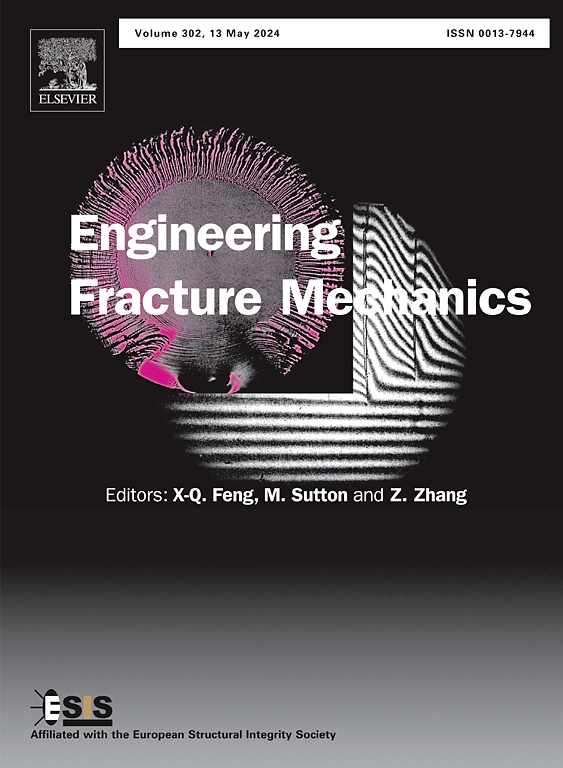Development of an approximate point load weight function for internal circumferential surface cracks in hollow cylinders
IF 4.7
2区 工程技术
Q1 MECHANICS
引用次数: 0
Abstract
Internal circumferential surface cracks pose a subtle yet severe threat to the structural integrity of pipes and risers. Accurate determination of stress intensity factors for various surface crack geometries is fundamental to reliable fatigue crack growth life prediction in hollow cylindrical components. In this study, a new approximate point load weight function was developed to calculate mode I stress intensity factors associated with internal circumferential surface cracks in hollow cylinders. The weight function coefficients were calibrated by using the stress intensity factor solutions obtained from parametric three-dimensional finite element models. The derived weight function accommodates a broad range of geometric parameters, including crack aspect ratio, relative crack depth and normalized wall thickness. The verification was conducted by comparing the stress intensity factors obtained from the developed weight function with those calculated using finite element models for both one-dimensional and two-dimensional stress distributions, showing good agreement. The results demonstrate that the derived approximate point load weight function provides reliable computation of stress intensity factors and potentially lays a foundation for fatigue crack growth life assessment for hollow cylinders containing internal circumferential flaws across various loading conditions.
空心圆柱体内周向表面裂纹近似点载荷函数的建立
内周向表面裂纹对管道和立管的结构完整性构成了微妙而严重的威胁。准确确定各种表面裂纹几何形状的应力强度因子是可靠地预测空心圆柱构件疲劳裂纹扩展寿命的基础。本文提出了一种新的近似点荷载权重函数,用于计算与空心圆柱体周向内表面裂纹相关的I型应力强度因子。利用参数化三维有限元模型得到的应力强度因子解对权重函数系数进行了标定。导出的权重函数可容纳广泛的几何参数,包括裂纹长径比、相对裂纹深度和归一化壁厚。将所建立的权函数得到的应力强度因子与有限元模型计算的一维和二维应力分布进行了比较,结果表明两者吻合较好。结果表明,导出的近似点载荷权重函数可可靠地计算应力强度因子,为含内周向缺陷的空心圆柱体在不同载荷条件下的疲劳裂纹扩展寿命评估奠定了基础。
本文章由计算机程序翻译,如有差异,请以英文原文为准。
求助全文
约1分钟内获得全文
求助全文
来源期刊
CiteScore
8.70
自引率
13.00%
发文量
606
审稿时长
74 days
期刊介绍:
EFM covers a broad range of topics in fracture mechanics to be of interest and use to both researchers and practitioners. Contributions are welcome which address the fracture behavior of conventional engineering material systems as well as newly emerging material systems. Contributions on developments in the areas of mechanics and materials science strongly related to fracture mechanics are also welcome. Papers on fatigue are welcome if they treat the fatigue process using the methods of fracture mechanics.

 求助内容:
求助内容: 应助结果提醒方式:
应助结果提醒方式:


